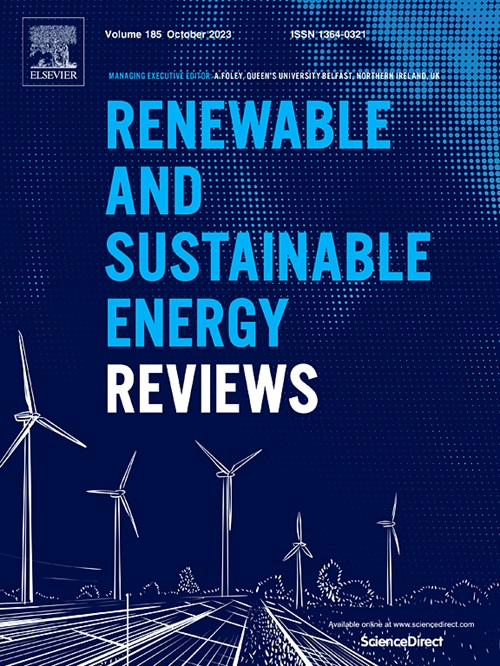Short-term prediction of mooring tension for floating offshore wind turbines under typhoon conditions based on the VMD-MI-LSTM method
IF 16.3
1区 工程技术
Q1 ENERGY & FUELS
引用次数: 0
Abstract
The safety of mooring systems for floating offshore wind turbine platforms is critical for their normal operation. During extreme weather events such as typhoons, ensuring the integrity of mooring lines becomes a paramount concern. With advancements in artificial intelligence technology, the integration of deep learning methods for short-term prediction of mooring line tension under typhoon conditions has introduced innovative solutions to address this safety issue. In this study, the proposed VMD-MI-LSTM neural network is employed to forecast mooring line tension under typhoon conditions over short periods. The platform model utilized in this research is the 5-MW Braceless semisubmersible platform, with the transient wind fields of Typhoon Hagibis serving as the research scenarios. Through fully coupled simulations, the tension of mooring lines under typhoon conditions is computed. Using wave height time series and typhoon wind speed as input data and mooring line tension data as output, a dataset is constructed. The optimal model parameters are determined through exploration of the hyperparameter space to develop the multi-input long short-term memory (MI-LSTM) mooring line tension prediction model. An analysis of the prediction results for mooring line #1 is conducted. Given the similarity of environmental conditions across different platform mooring lines, the model's universality is evaluated by predicting mooring line #1 and comparing it with the VMD-MI-LSTM model. This comparison highlights the optimization effect of the VMD variational mode decomposition method. This study provides short-term predictions of mooring line tension under typhoon conditions. By integrating with the mooring line adjustment system, effective adjustment of the mooring system of the floating wind turbine platform can be achieved under extreme environmental conditions, thereby enhancing the platform's safety and resilience against risks.
求助全文
约1分钟内获得全文
求助全文
来源期刊

Renewable and Sustainable Energy Reviews
工程技术-能源与燃料
CiteScore
31.20
自引率
5.70%
发文量
1055
审稿时长
62 days
期刊介绍:
The mission of Renewable and Sustainable Energy Reviews is to disseminate the most compelling and pertinent critical insights in renewable and sustainable energy, fostering collaboration among the research community, private sector, and policy and decision makers. The journal aims to exchange challenges, solutions, innovative concepts, and technologies, contributing to sustainable development, the transition to a low-carbon future, and the attainment of emissions targets outlined by the United Nations Framework Convention on Climate Change.
Renewable and Sustainable Energy Reviews publishes a diverse range of content, including review papers, original research, case studies, and analyses of new technologies, all featuring a substantial review component such as critique, comparison, or analysis. Introducing a distinctive paper type, Expert Insights, the journal presents commissioned mini-reviews authored by field leaders, addressing topics of significant interest. Case studies undergo consideration only if they showcase the work's applicability to other regions or contribute valuable insights to the broader field of renewable and sustainable energy. Notably, a bibliographic or literature review lacking critical analysis is deemed unsuitable for publication.
 求助内容:
求助内容: 应助结果提醒方式:
应助结果提醒方式:


